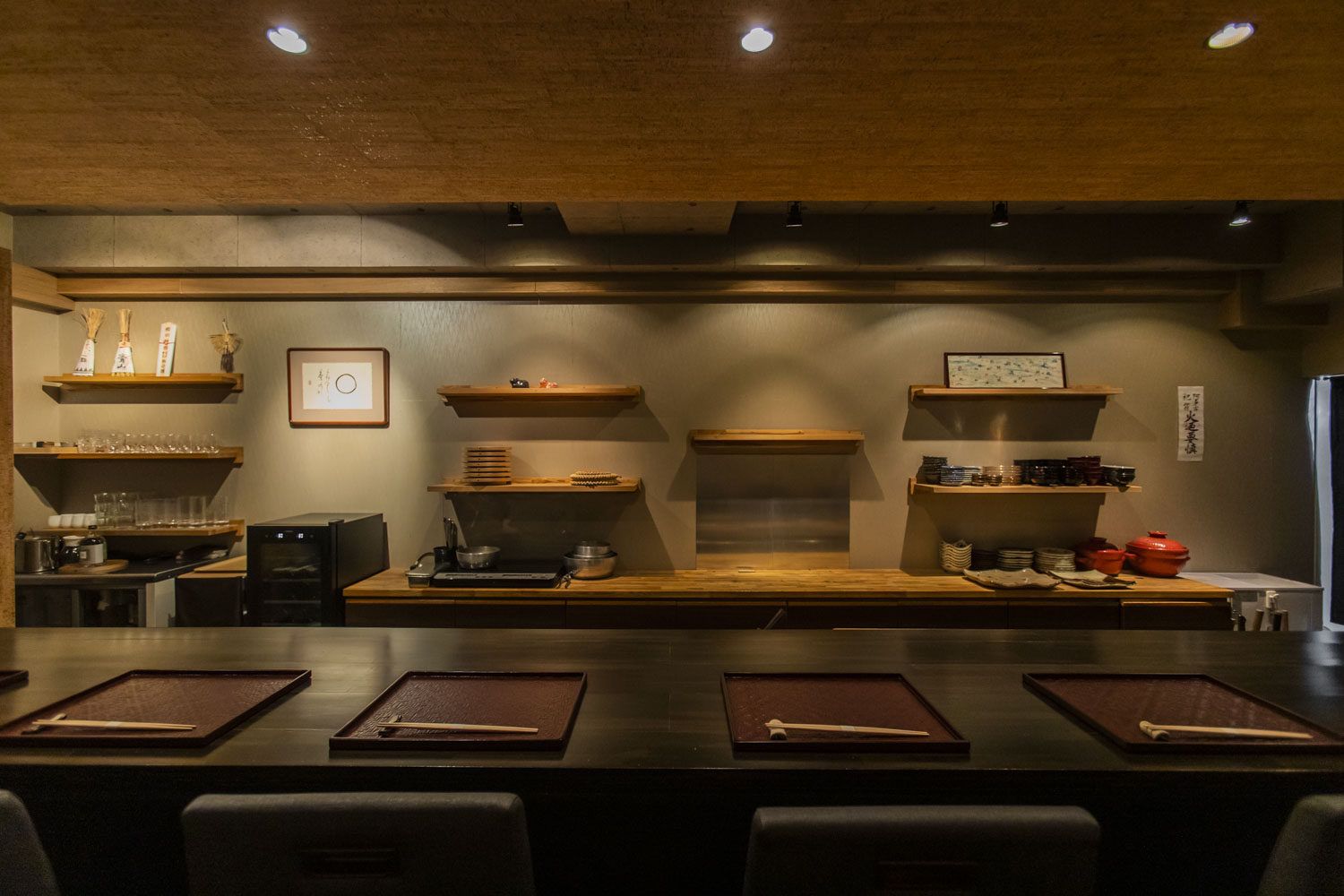
Fukuoka
Tsugumi
嗣味
Tsugumi offers the best of Kyushu prepared in the skillful hands of a Kyoto-trained chef. The authentic Japanese cuisine pays homage to all things Kyushu, from produce to tableware and sake. While it is the food that will entice you here, a deeper sense of all that Kyushu has to offer is the added reward you take home.
Tsugumi is found in the Watanabe-dori area of central Fukuoka. It is easily accessible from Hakata Station – the shinkansen hub and a key link to Japan’s main island of Honshu – and close to Tenjin, Yakuin, and the high-end neighborhood of Takasago. Watanabe-dori is home to the Yanagibashi Rengo Market, a bustling commercial market with 100 years of history, affectionately known as “Hakata’s Kitchen”. Originally a quiet residential neighborhood, in recent years an array of unique eateries has sprung up drawing gourmands from near and far.
Along a street with a popular sushi restaurant and trendy wine bar, look for the Tsugumi sign by a tucked-back doorway on the first floor of an undressed concrete building. Its doors opened in June 2020 with the homecoming of Takeshi Inoue, born in Kurume City, Fukuoka, who trained at premier Kyoto restaurants. The modern Japanese interior combines cork with unfinished concrete around an eight-seat counter. The space has the calm of a gallery, an ambience further aided by the chef’s collection of paintings and objects on display all around: tableware by Kyushu potters, and a print of an Edo period painting by Buddhist priest and artist Sengai Gibon.
CUISINE
Bountiful Kyushu produce meets indubitable culinary skills
The omakase course of ten dishes for both lunch and dinner is based on Kyushu’s most delicious ingredients available in that moment. Chef Inoue considers the ideal cooking method to highlight each ingredient’s sumptuous flavors, relying on his carefully cultivated skills and experience. Many associate Japanese cuisine with only gentle, mild flavors; Inoue creates a variety of dishes to be enjoyed by everyone — young, old, man, woman.
Following a typical kaiseki course composition – including sakizuke, otsukuri, wanmono, yakimono, and shokuji (rice accompanied by miso soup and pickles) and dessert – but the content is anything but typical. And there are no signatures here because everything is dictated by available produce. But one dish every guest raves about is the chef’s seasonal charcoal grilled fish. He uses no unnecessary garnishes, and nothing is ever overdone. The focus is on simple and delicious foods that guests never tire of. And all the while, the chef is carefully observing and adjusting volumes so guests can finish their meals effortlessly.
Dessert in traditional Japanese cuisine often refers to seasonal fruit or ice cream, but Inoue invests time and effort into creating handmade wagashi, traditional Japanese sweets. Be it Kuzukiri arrowroot starch noodles with vibrant red shiso, warabi bracken mochi flavored with Kikaijima fava beans, or a blissful Ichigo daifuku soft mochi rice cake filled with red bean paste and a juicy local Amao strawberry, the philosophy of Japanese cuisine featuring Kyushu produce is followed right through to the last delectable bite.
Tableware plays an integral role in Japanese cuisine, as each dish represents the chef’s expression of the season. Tsugumi is the perfect stage to enjoy the interplay of Kyushu produce and tableware. A summer dish is more appealing and refreshing served in vividly colored Satsuma Kiriko cut glass, and a winter dish conveys a warm, cozy feeling served in a rich brown clay bowl. Karatsu ware and Arita ware from Saga Prefecture, Nagasaki Hasami ware, and Kagoshima Satsuma ware form the stunning collection of ceramics by craftsmen on Japan's third-largest island. Every item is the work of a potter whose love for food has fostered a deep sense of the perfect dimensions and how to create seamless affinity with the food served within.
INGREDIENTS
From meat and vegetables to seasonings and even the kombu that flavors the chef’s dashi, almost every ingredient found at Tsugumi is produced in Kyushu, allowing Inoue to showcase the richness of the local land. Quality and freshness are paramount, and these are guaranteed by nurturing strong relationships with suppliers at the markets.
Diners can enjoy the natural flavor and aroma of freshly caught abalone from Meinohama, Fukuoka; sink their teeth into fried longtooth grouper caught by an expert fisherman in the clear waters of the Goto archipelago in Nagasaki; and experience melt-in-the-mouth sashimi of yaito katsuo black skipjack tuna from Tsushima, Nagasaki. Chef Inoue’s focus is on surprising guests with the freshest version of perhaps familiar ingredients, but in unexpected preparations.


CHEF
Takeshi Inoue
ALCOHOLIC BEVERAGES
The exquisite selection of Kyushu-made libations is in large part thanks to the chef’s own penchant for a drink. He can assure you that every single elegant choice pairs wonderfully with Japanese cuisine, and the stories behind the sips are fascinating. There are always six to eight varieties from Kyushu sake breweries in stock, including KITAJIMA made with award-winning sakamai cultivated by master rice farmers, and the new series Ubusuna by Hananoka, a brewery actively engaged in natural farming and horse tilling for rice cultivation. Dining at Tsugumi is also a chance to try the many Japanese wines and spirits that have seen a dramatic leap in quality and popularity in recent years. Be sure not to overlook the Kyushu wine that placed at a French wine competition or sparkling wine made according to the same traditional methods employed in Champagne. You might prefer to try some craft spirits or Kuma Jochu – one of just four shochu varieties eligible to be labeled with its region. And a recommendation to kick the night off: a tantalizing highball combining sweet potato shochu and sansho Japanese pepper.
Course
- The price includes our booking fee of ¥8,000
- The price includes our booking fee of ¥8,000
- The price includes our booking fee of ¥8,000
- The price includes our booking fee of ¥8,000








